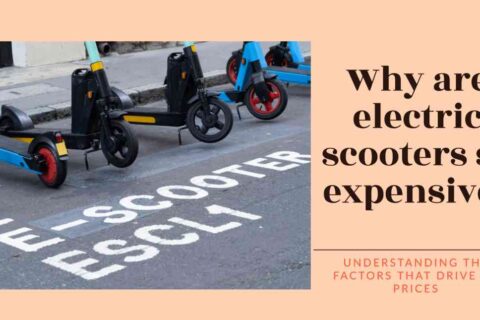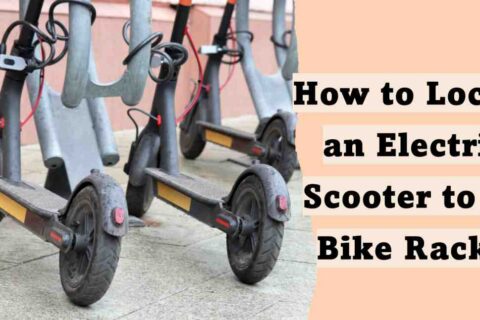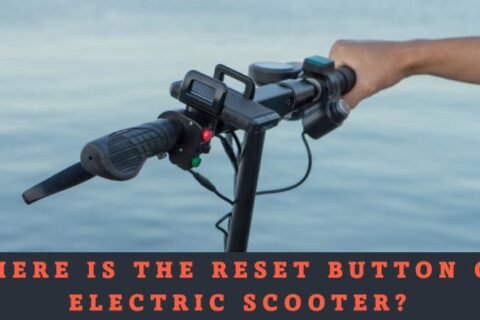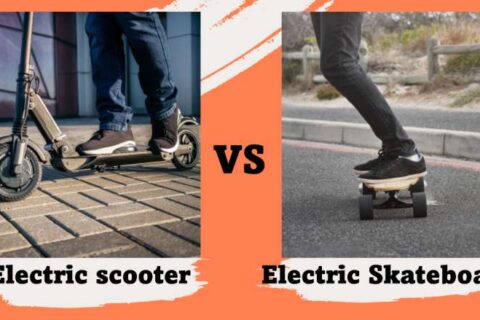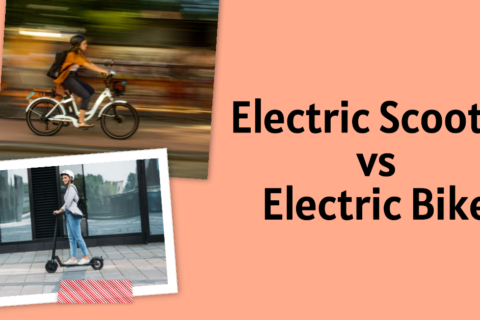Do you want to know how high should scooter handlebars be? so this is the article for you with all the answers in your mind. Ok, my bad I mean what I had in my mind when I first have that question.
When it comes to scooter handlebars, finding the right height is crucial for a comfortable and safe riding experience. It may seem like a small detail, but trust me, getting it right can make a world of difference.
So, let’s explore some methods to determine the ideal height for your scooter’s handlebars and understand why it matters.
But first thing first lets a look at the main key takeaways
Key Takeaways:
- Finding the right handlebar height is crucial for a comfortable and safe riding experience on a scooter.
- Position the handlebars below the belly button for comfort and maneuverability.
- Consider factors like elbow angle, height, surface type, speed, and wind conditions.
- Too low handlebars can cause hand numbness and aches, while too high handlebars can lead to tension and difficulty controlling the scooter.
- Adjustable handlebars and aftermarket modifications offer customization options.
- Wider handlebars provide better balance and control.
- Handlebar height recommendations vary for different age groups.
- Safety is important when adjusting handlebars.
- The ideal handlebar height ensures a comfortable riding posture and enhances overall enjoyment.
Table of Contents
Togglehow high should scooter handlebars be?
When it comes to scooter handlebars, finding the ideal height is key to ensuring a comfortable and enjoyable riding experience. Let’s explore some methods that can help you find the perfect handlebar height.

Method 1: Positioning below the belly button
Finding the perfect handlebar height for your electric scooter can make a significant difference in your riding experience. While there are varying opinions on the exact measurement, a general consensus suggests that the handlebar height should be positioned between 1-2 inches (2-5 cm) below your belly button, up to the same level as your belly button.
Some experts argue that the handlebar height should be a few centimeters above your hips, while others suggest it should align with your waistline. Essentially, these recommendations are quite similar, emphasizing a height that provides comfort and maneuverability.
For younger riders, aiming for a handlebar height between the belly button and waist is considered ideal. This positioning allows them to make the most of their electric scooter while leaving some room for growth and adjustment as they continue to ride.

Method 2: Finding the most comfortable elbow angle
Here’s how it works: Grab a pencil or any writing tool that won’t damage your surroundings. Stand alongside a wall or a vertical surface where you can make a mark. Let your arms hang naturally by your sides. Begin slowly bending one arm towards the wall, ensuring your palm faces downward.
Try out different angles, around three or four, and pay attention to your comfort level. Visualize yourself riding the scooter and consider which angle feels ideal for that experience.
Naturally, you’ll find that an angle of 100° to 120° between your forearm and upper arm works well. Spend a few moments with your arm at that angle, making sure it feels neutral and natural, without causing excessive strain or fatigue.

Method 3: Consideration based on height
While the previous method I mentioned offers a quick approach to handlebar height, it may not be precise for everyone. Factors like arm length and shoulder height also matter.
Your body proportions are important. Standard bar height guides can be helpful, but remember that height alone isn’t the only factor. Everyone is unique, and even shoulder height affects handlebar accuracy.
So, consider your entire body and experiment to find the perfect handlebar height for your electric scooter. Embrace the process and make it tailored to you.
Measuring Scooter Handlebar Height
Measuring your scooter’s handlebar height is a straightforward process. Follow these simple steps:
1. Stand next to your scooter in an upright position, ensuring that the scooter is on a level surface.
2. Extend a measuring tape from the ground to the highest point of the handlebars. Make sure the measuring tape is straight and parallel to the ground.
3. Take note of the measurement in either inches or centimeters.
scooter handlebar height chart
| Person Height (ft-in/cm) | Recommended Scooter Handlebar Height (in/cm) |
|---|---|
| 3’1″ – 3’6″ (94-107 cm) | Below 27 in (Below 68 cm) |
| 3’6″ – 4’1″ (107-124 cm) | 24-30 in (61-76 cm) |
| 4’1″ – 4’5″ (124-135 cm) | 25-31 in (64-79 cm) |
| 4’5″ – 4’9″ (135-145 cm) | 26-31.5 in (66-80 cm) |
| 4’9″ – 5’2″ (145-157 cm) | 30-33.5 in (76-85 cm) |
| 5’2″ – 5’5″ (157-165 cm) | 30-33.5 in (76-85 cm) |
| 5’5″ – 5’8″ (165-173 cm) | 34-40 in (86-101 cm) |
| 5’8″ – 5’11” (173-180 cm) | 36-42 in (91-107 cm) |
| 5’11” – 6’2″ (180-188 cm) | 38-43 in (97-109 cm) |

Method 4: Surface type
The type of surface you ride on can also influence handlebar height preferences. If you primarily ride on rough terrain or encounter uneven surfaces, you might opt for slightly higher handlebars to absorb shocks and maintain stability. On the other hand, if you mostly ride on smooth pavements, lower handlebars may suffice.
Method 5: Traveling speed
The speed at which you ride can impact handlebar height preferences as well. For higher speeds, having slightly lower handlebars can enhance aerodynamics and reduce wind resistance, allowing you to maintain better control and stability.
Method 6: Course of the wind
Consider the wind conditions in your riding environment. If you frequently ride against strong headwinds, having higher handlebars can help you maintain a more comfortable and efficient riding position.
Consequences of handlebars being too low
- Tingling and Numbness in the Hands:
Have you ever experienced that tingling sensation or numbness in your hands after a long ride? Well, it turns out that the pressure on the nerves in your hands caused by uneven weight distribution plays a significant role.
When your handlebars are lower, more weight is transferred to your hands and wrists, which can lead to discomfort and even long-term issues. - Aches and Pains in the Shoulders, Neck, and Lower Back:
When you put yourself hunching over the handlebars, struggling to maintain a forward-leaning position. It’s not uncommon to experience aches and pains in your shoulders, neck, and lower back as a result.
The strain on these muscles due to poor body alignment can lead to discomfort that lingers long after your ride.
Taking breaks to stretch, adjusting your handlebar height, or even considering a bike fit specialist can alleviate these issues and make your cycling experience more enjoyable. - Soreness or Numbness in the Nether Regions:
While not the most comfortable topic to discuss, it’s an important one nonetheless. The pressure exerted on the perineal area due to uneven weight distribution can lead to soreness and numbness in sensitive regions.
This can be a source of great discomfort and might even dissuade you from riding altogether.
By finding the right balance between handlebar height, saddle position, and overall bike fit, you can mitigate these issues and make your rides more enjoyable. - Decreased Power Production:
Cycling is all about efficiency and power output. Unfortunately, having lower handlebars can restrict your upper-body mobility, limiting your ability to generate power efficiently.
The forward-leaning position might make you feel more aerodynamic, but it can hamper your ability to tap into your full potential.
It’s important to strike a balance between aerodynamics and the ability to generate power effectively, so you can optimize your performance on the bike. - Injuries resulting from poor body position:
Another aspect to consider when contemplating lower handlebars is the potential for injuries. Handling your bike in steep or challenging terrains becomes more difficult when your body position is compromised.
The lower handlebars might give you that sleek and aggressive look, but if they hinder your control and stability, it’s essential to reassess your setup. Remember, safety should always be a priority when enjoying your cycling adventures.

Consequences of handlebars being too high
- Tension and Fatigue in the Arms and Upper Body:
Imagine gripping the handlebars of your electric scooter with your arms locked in a rigid position.
As you cruise along, that tense posture can lead to unwanted fatigue and discomfort in your arms and upper body. This can turn a fun ride into a tiresome ordeal. - Difficulty Controlling the Scooter:
Maintaining control of your electric scooter is paramount, especially when navigating sharp turns or riding at high speeds.
If your handlebars are set too high, it can become challenging to maintain that necessary grip and control. It’s like trying to steer a ship with a distant tiller.
By finding the optimal handlebar height, you can enhance your maneuverability and confidently tackle any twists and turns that come your way. - Increased Risk of Injury:
No one wants to think about accidents or falls, but it’s crucial to consider safety when riding an electric scooter.
If your handlebars are set too high, it can increase the risk of injury in case of a mishap. Imagine being unable to react swiftly or losing control due to an uncomfortable handlebar position.
Adjusting the handlebar height to a suitable level ensures better stability and reduces the chances of injury should the unexpected occur. - Affects the Intended Geometry:
Electric scooters are designed with specific geometry to provide a balanced and comfortable riding experience.
Raising the handlebars can throw off this intended geometry, leading to discomfort and pain in your lower back, neck, shoulders, and hands. It’s like trying to fit a square peg into a round hole.
Can You Make Your Scooter Taller or Shorter?
Can you make your scooter taller or shorter? The answer is, it depends.
Some scooter models come with adjustable handlebars, allowing you to modify the height according to your preference. These scooters typically have mechanisms such as telescoping or removable handlebars that offer flexibility in height adjustments.
On the other hand, if your scooter does not come with adjustable handlebars, there are still options to explore. Aftermarket accessories and modifications can provide solutions for altering handlebar height.
For instance, handlebar risers can be added to raise the height, while handlebar spacers can be used to lower it. These accessories are often available at scooter specialty stores or online retailers.
It’s important to note that not all scooter models are compatible with aftermarket modifications, so be sure to check compatibility before making any adjustments.

How to change the height of scooter handlebars?
- Loosening the Collar Tension – To kick-start the handlebar height adjustment, locate the lever that holds the handlebars in place. You’ll typically find it near the top of the scooter’s stem. Gently release the lever, allowing it to loosen the collar tension. It’s like giving your handlebars a bit of freedom to find their sweet spot.
- Fine-Tuning the Height – With the lever released, it’s time to adjust the handlebar height according to your preference. Gradually raise or lower the handlebars until you find the perfect height that suits your comfort and riding style. Imagine customizing your scooter to fit you like a tailored suit – it’s all about finding that ideal balance.
- Securing the Handlebars – Once you’ve dialed in the desired handlebar height, it’s time to lock it in place for a secure ride. Close the lever, and feel the satisfying click as it securely fastens the handlebars in their new position. This step ensures that your handlebars won’t budge during your scooting adventures, providing stability and peace of mind.
- Adjusting Tension with the Nut – If you feel that the lever tension needs a bit of tweaking, fear not! There’s an additional feature that allows you to fine-tune the tension. Look for a nut on the side of the lever – adjusting it can help you achieve that Goldilocks level of tension, neither too loose nor too tight. It’s like finding the perfect balance between a firm grip and effortless adjustability.
- Exploring the Handlebar Limits – Some scooters have a special surprise for you at the highest handlebar position. You might notice a satisfying clicking mechanism that indicates you’ve reached the limit. It’s a little detail that assures you that you’ve found the maximum height for your handlebars. Consider it a small victory in your quest for handlebar perfection.
Specific Considerations for Scooter Handlebars:
Electric Scooters:
The average handlebar height for electric scooters can vary depending on the model and brand. Generally, electric scooters for adults have handlebars positioned at a comfortable height for riders of average stature.
But it’s important to note that some electric scooters have adjustable handlebars, allowing riders to customize the height based on their individual needs and preferences. This adjustability is particularly useful when sharing the scooter with multiple riders of varying heights.
In addition to handlebar height, electric scooter handlebar width is also important. Wider handlebars provide enhanced stability and control, especially when maneuvering through tight spaces or making sharp turns.
They allow electric scooters for better leverage and balance, giving riders a confident and secure riding experience.
Scooters for Different Age Groups:
Handlebar height requirements vary across different age groups, as children and adults have different body proportions.
What Height Should Scooter Handlebars Be For My Kids?
For toddlers, scooter handlebars should be at an appropriate height that allows them to comfortably reach and maintain control. A good rule of thumb is to choose a handlebar height that is approximately half the child’s height.
How High Should Micro Scooter Handlebars Be?
Micro scooters, designed for older children and young teens, have adjustable handlebars to accommodate growth and ensure a proper fit.
Handlebars on a micro scooter should be around 24 inches or 60 centimeters high. For electric scooters, the average handlebar height is around 39.1 inches or 99.3 centimeters.
As for Micro Maxi scooters, they are specifically designed for older kids and pre-teens, featuring taller handlebars to accommodate their increasing height.
The handlebars on a Micro Maxi scooter are adjustable and can extend up to 33.5 inches or 85 centimeters from the deck

Advantages of Different Handlebar Types
Understanding the benefits of different handlebar types can help you make an informed decision and choose the one that suits your riding style and preferences.
Straight Handlebars: Straight handlebars are a popular choice for many scooters. They offer simplicity and a classic design that appeals to riders of all ages. Straight handlebars provide a natural grip position and allow for a comfortable, upright riding posture. They offer stability, making them suitable for riders who prioritize control and maneuverability.
Tilted Handlebars: Tilted handlebars, also known as BMX-style handlebars, have a forward-leaning design. These handlebars are favored by riders who engage in freestyle tricks and stunts. The tilted angle offers better leverage and control during jumps, spins, and other aerial maneuvers.
T-Bar Handlebars: T-bar handlebars are commonly found on scooters designed for younger riders. These handlebars provide excellent stability and control, making them ideal for children and beginners. The T-shaped design allows riders to grip the handlebars comfortably, providing a safe riding experience.
Y-Bar Handlebars: Y-bar handlebars, also known as “Y-shaped” handlebars, are another popular choice among scooter enthusiasts. These handlebars offer a unique look and provide a wider grip, enhancing stability and control. Y-bar handlebars are often found on scooters designed for freestyle and stunt riding.

Why Scooter Handlebar Width is Important?
Balance and Stability: The width of the handlebars influences your balance while riding a scooter. Wider handlebars provide a broader grip, allowing for better weight distribution and stability. When your hands are positioned comfortably apart on wider handlebars, you have more control over your scooter, especially when navigating turns or encountering uneven terrain. This increased stability translates to a safer and more enjoyable riding experience.
Maneuverability and Control: The width of the handlebars also affects your ability to maneuver the scooter with precision. Narrower handlebars offer quicker and more responsive steering, ideal for riders who prioritize agility and quick turns. On the other hand, wider handlebars provide a more significant mechanical advantage, allowing for smoother and more controlled steering inputs.
Body Proportions and Comfort: The width of the handlebars should complement your body proportions for optimal comfort. Handlebars that are too narrow may result in cramped hand positioning and discomfort during longer rides. Conversely, excessively wide handlebars can strain your shoulders and arms, leading to fatigue.
Frequently Asked Questions (FAQ)
What is the recommended handlebar height for adult riders?
The recommended handlebar height for adult riders is typically set at a level that allows for a slightly bent elbow when gripping the handlebars. This position promotes a comfortable and natural riding posture.
How do I determine the right handlebar height for my child’s scooter?
The handlebar height for kids’ scooters should be adjusted based on their age and height. As a general guideline, the handlebars should be set at a height that allows the child to maintain a comfortable and controlled riding position with their arms slightly bent.
Can I adjust the handlebar height on my scooter?
It depends on the scooter model. Many scooters offer adjustable handlebar heights, allowing riders to customize the height to their preference.
What should I do if the handlebars on my scooter are too high or too low?
For scooters with adjustable handlebars, follow the manufacturer’s instructions to change the height. If your scooter does not have adjustable handlebars, you may need to consider alternative handlebar options or consult a professional for assistance.
Are there any safety considerations when adjusting handlebar height?
Yes, safety is crucial when adjusting handlebar height. Ensure that the handlebars are securely tightened after making adjustments to prevent any wobbling or instability during rides.
Should handlebar height be the same for different types of scooters?
Handlebars on stunt scooters are typically higher to accommodate tricks and maneuvers, while commuter scooters may have lower handlebars for a more streamlined and efficient riding position.
Conclusion
Determining how high should scooter handlebars be, involves various methods, including positioning below the belly button, finding the most comfortable elbow angle, considering your height, surface type, traveling speed, and even the course of the wind. By taking these factors into account, you can customize your handlebar height to suit your unique needs and preferences.
The importance of scooter handlebar height cannot be overstated. It directly impacts your riding experience, comfort, and control. By utilizing the various methods discussed and considering the specific considerations outlined, you can achieve the perfect handlebar height and width for your scooter.



